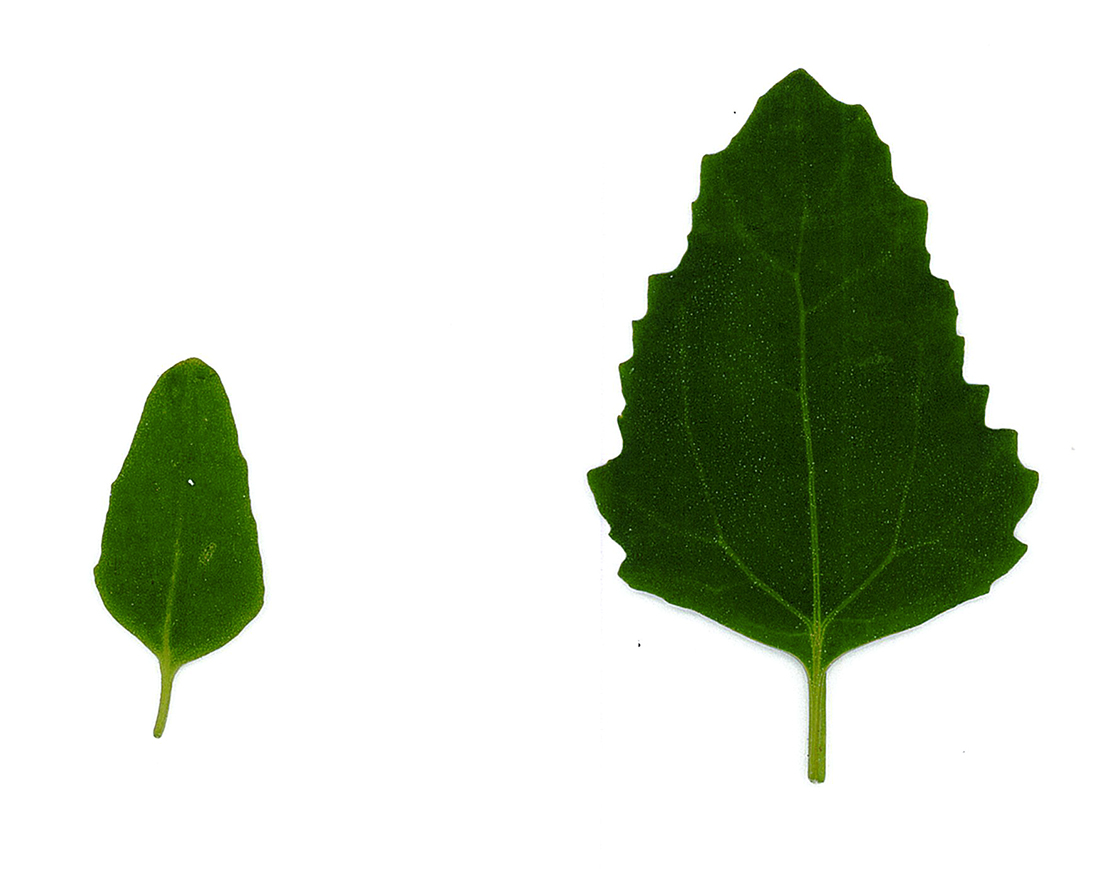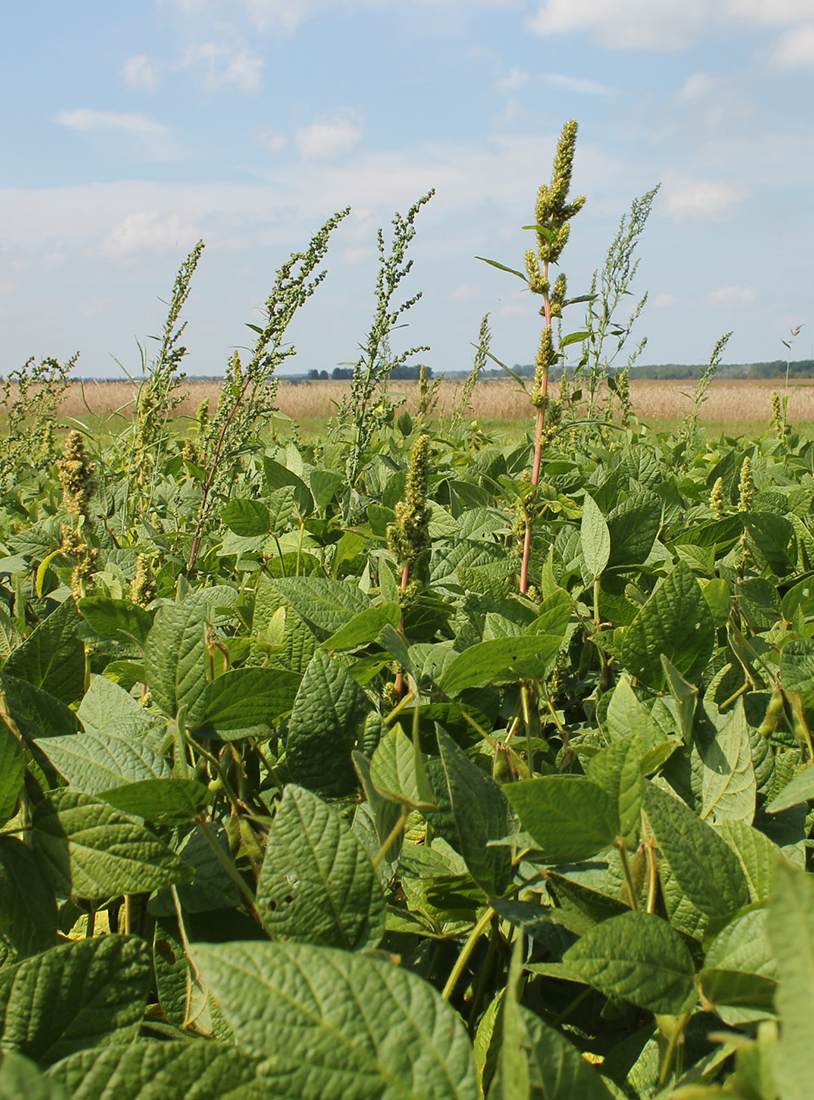Lamb's-quarters
- Goosefoot (Chenopodiaceae family):
- Chenopodium album L.
- EPPO code:
- CHEAL
- Other names:
- Fat-hen, pigweed, white goosefoot, white pigweed
Species information
- Lifecycle:
- Annual.
- Propagation:
- Reproduces by seed.
- Emergence:
- One of the first annual weeds to emerge in the spring. It will generally emerge over a 6–7 week period with the majority of its total emergence occurring within the first 2–3 weeks.
- Habitat:
- Found in most cultivated fields. Less prevalent in winter cereals and established forage crops.
- Competitiveness:
- Considered one of the most competitive annual broadleaf weeds in Ontario. Agriculture and Agri-Food Canada research demonstrated yield losses in corn that ranged from 11% (at 2000 plants/ac) to 95% (at 128,000 plants/ac).
- Resistance:
- A number of populations are resistant to Group 2 (for example, imazethapyr) and Group 5 (for example, atrazine) herbicides in Ontario and throughout North America.
Identification clues
Leaves
- Cotyledons:
- Linear, narrow, fleshy in appearance with a distinct stalk, reddish-purple underneath.
- Young leaves:
- Ovate (egg-shaped) often coated with white, mealy powder.
- Mature leaves:
- Triangular and broad with irregular toothed margins, covered in white mealy powder.
Mature plant
- Stem:
- The first 2–4 leaves have an opposite orientation (2 per node) on the stem but later leaves have an alternate orientation. The stems are generally smooth, but can feel gritty due to the presence of white mealy powder. There are red to purple lengthwise ridges on the stem.
- Flowers and seed heads:
- Very small globular green flowers are arranged in a compact inflorescence. The seed head takes a granular looking appearance at maturity. Seeds are small, black, round and flattened.
- Roots:
- Taproot.
Often mistaken for
I know it's not Spreading atriplex because spreading atriplex has a much narrower leaves with two prominent basal lobes lacking the white-mealy powder compared to lamb’s-quarters much broader triangular shaped leaf. Spreading atriplex also has a wiry-stemmed opposite leaf orientation compared to the much more branched lamb’s-quarters with its alternate leaf orientation.
I know it's not Fig-leaved goosefoot because fig-leaved goosefoot has much narrower, pale-green leaves with wavy toothed margins and two prominent basal lobes compared to the broad, dark-green triangular shaped leaves of lamb’s-quarters.
I know it's not Oak-leaved goosefoot because as the name implies, it has “oak-leaf” shaped leaves with prominent white veins. Its fleshy, dark-green leaves are distinctly different from lamb’s-quarters. It also has more of a creeping habit than an upright habit.




